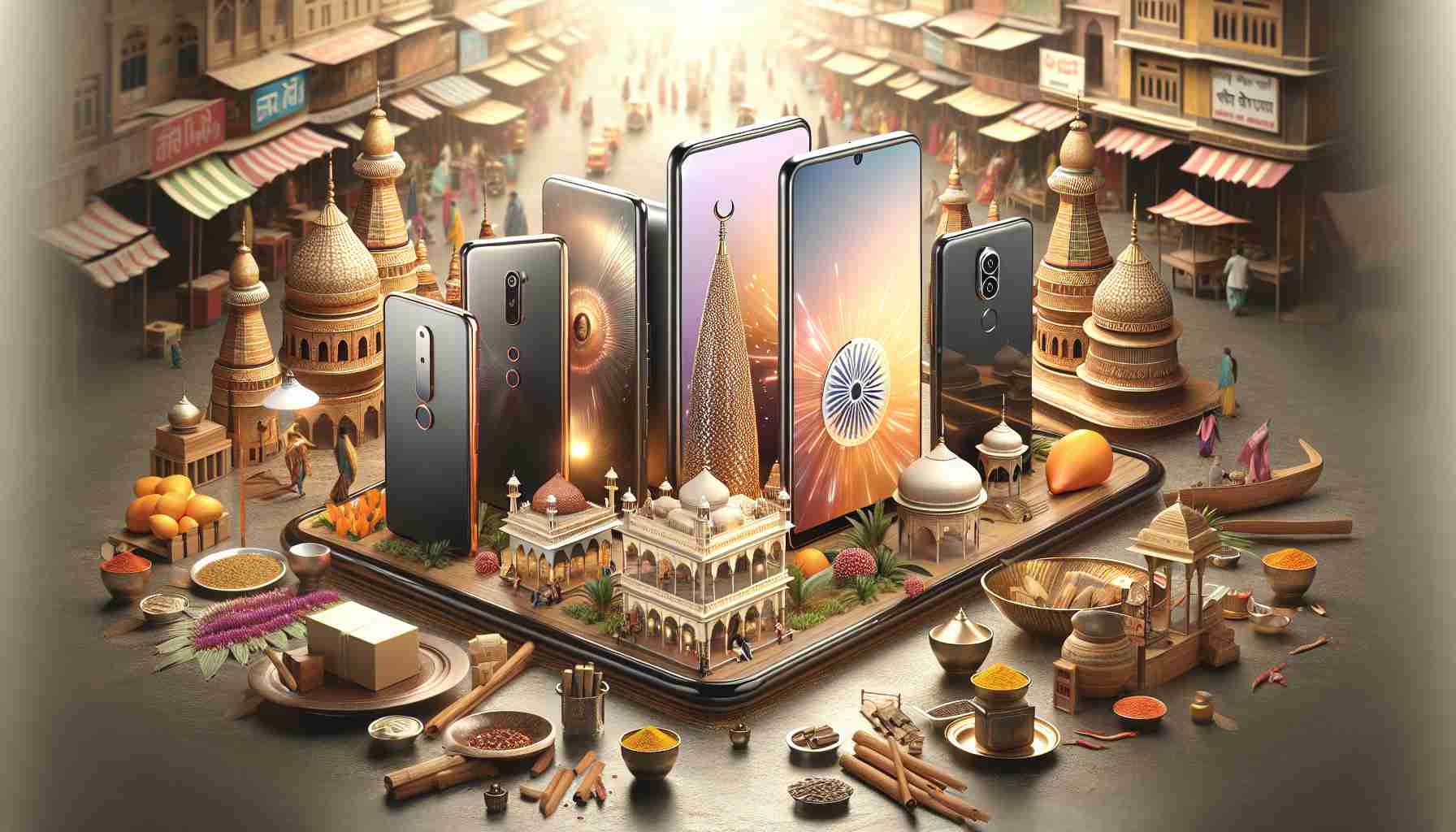India’s Taste for Luxury Smartphones Amplifies
India’s affluent smartphone market has witnessed an impressive surge, showcasing a remarkable preference for high-end devices. During the initial quarter of 2024, luxury smartphones have reigned supreme with sales soaring in the upper echelons of the market. The Indian smartphone market enjoyed an 11.5% year-over-year growth, with IDC highlighting the ‘super-premium’ niche—smartphones exceeding the Rs 65,000 mark—as the star of this growth story, ballooning by 44%.
Top-Shelf Smartphones Command the Market Share
The appetite for premium smartphones is undeniably strong, as evidenced by the sector’s growth from 7% to 9% of the market share. Apple established dominance in this rarified segment, claiming a 69% market share, while Samsung showcased a substantial presence with 31%. Apple and Samsung’s upscale offerings, such as the iPhone 14 and 15 series, as well as Samsung’s Galaxy S24 and S23, led the charge, with Apple alone accounting for four of the top-selling models.
Competition Heats Up in the Premium Space
The competition was fierce in the premium segment as well, where Apple’s market share dwindled slightly to 45%. Samsung has made significant strides, hitting a near-equal 44% share, a noticeable leap from its earlier 16%. The Galaxy S23 series and the iPhone 13 and 12 continue to be consumer favorites.
OnePlus Secures Mid-Range Segment Leadership
Despite a downturn in shipments, with a conspicuous 46% drop, OnePlus has managed to stay afloat as the mid-range dominator, hoarding a 38% share of shipments in the above Rs 30,000 category. Closely trailing were other Chinese brands including Vivo and Oppo, though the collective market share in this segment saw a shrinkage from 6% to 3%. The Indian market’s penchant for luxury smartphones is vividly clear, with Apple and Samsung’s latest models leading the extravagance.
India’s Taste for Luxury Smartphones Amplifies
India’s affinity for high-end gadgets continues to shape the consumer electronics industry. With a robust growth rate of 11.5% in the smartphone sector, luxury brands are finding fertile ground in an economy known for its fast-paced technology adoption. The super-premium smartphones, priced above Rs 65,000, are no longer just a symbol of opulence but a rapidly expanding market segment, seeing an exceptional 44% growth trajectory.
Top-Shelf Smartphones Command the Market Share
Premium smartphones have captured the imagination of India’s tech-savvy citizens, increasing their market share from 7% to 9%. The vanguard of this movement is Apple with an imposing 69% market share dominance. Samsung also boasts a strong position with 31%. This is reflective of a global trend where high-margin luxury smartphones are becoming status symbols. The iPhone 14, 15 series, and Samsung’s Galaxy S24 and S23 models spearhead this trend, further fueling Apple’s significant hold on top-selling charts.
Competition Heats Up in the Premium Space
The premium smartphone segment is experiencing a shift in dominance, with Apple seeing a slight decrease to 45% market share and Samsung leaping forward to a nearly matching 44% share, up from a previous 16%. This suggests a competitive fervor bolstering innovation and customer choice. Consumers show a sustained affinity for models like the Galaxy S23 series, and the slightly older iPhone 13 and 12.
OnePlus Secures Mid-Range Segment Leadership
OnePlus has retained its grip on the mid-range market despite shipment declines, commanding a 38% share in the category that includes smartphones priced above Rs 30,000. This underscores the brand’s value proposition of marrying premium specs with affordability. Vivo and Oppo follow, although the collective segment share has dipped, the conquest of luxury smartphones by brands such as Apple and Samsung continues to influence market dynamics.
—
Key Questions and Answers:
What is driving the growth of luxury smartphones in India?
The growth can be attributed to several factors including increased disposable income, the need for status symbols, and the value placed on technology and connectivity in a rapidly digitizing country. Moreover, many consumers upgrade to premium models for advanced features and better user experiences.
What are the key challenges associated with the luxury smartphone market in India?
Challenges include price sensitivity among a significant section of the population, competition from mid-range smartphones that offer similar features, and the potential of economic downturns affecting discretionary spending.
What controversies are associated with luxury smartphones?
These often relate to the practices of manufacturing, such as labor concerns or environmental impact. More so, the digital divide becomes evident as the market for luxury goods grows, highlighting issues of affordability and access.
—
Advantages and Disadvantages:
Advantages:
– Innovation and technology leadership in the global marketplace.
– Creation of niche markets and consumer classes that may support higher value-addition in the economy.
– Potential for increased brand loyalty and customer retention for premium brands.
Disadvantages:
– Elevated prices may exclude a large base of the population.
– Potential normalization of high prices could impact overall market price sensitivity.
– Possible negative environmental impact due to increased electronic waste.
—
For more insights and latest trends in consumer electronics and the technology market, you can explore the official brand pages by following these links:
Apple
Samsung
OnePlus
Please keep in mind that this is a generalized commentary and does not constitute investment or market advice. The actual market conditions and the performance of these brands can be impacted by a multitude of factors beyond the scope of this response.
